Lice can be some of the most troublesome bugs you can find indoors. Seeing lice is a sign of trouble as they can cause significant discomfort and health issue. Furthermore, lice inside the house can signal a wider problem you need to take care of.
You need to eliminate lice properly whenever you see them on your clothes, bed, or anywhere else inside the house. First, you need to identify lice correctly as they are treated differently from other bugs.
Table of Contents
What Are Lice?
Lice are types of parasites. They live on human hair and they feed on human blood. These parasites are very small but still visible.
Parasites such as lice may not transmit diseases. However, they still need to be eliminated quickly as they can lay as many as 6 eggs per day.
Lice also cause skin reactions as they feed on human blood.
What Do Lice Look Like?
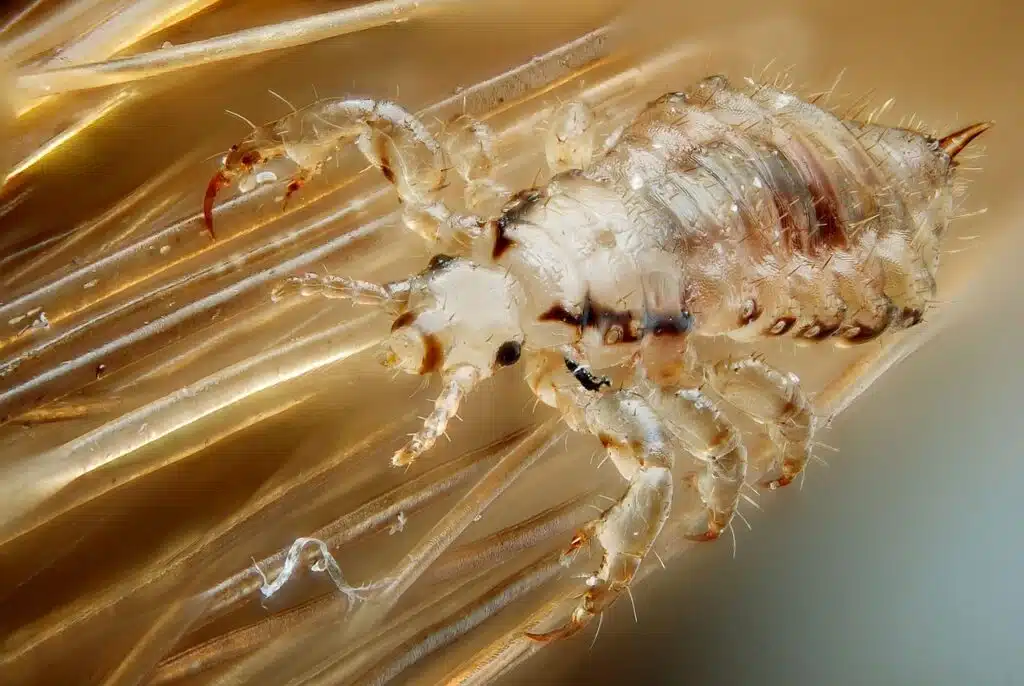
Lice are small parasites that attach to or live in human hair. They grow to a maximum size of 2-3mm.
Lice have a gray or tan color although they can also appear brown. They have an oval shape and resemble sesame seeds in shape and size.
11 Bugs That Look Like Lice
The following species of insects and bugs can often be confused with lice. Here’s why they look so similar.
1. Ants
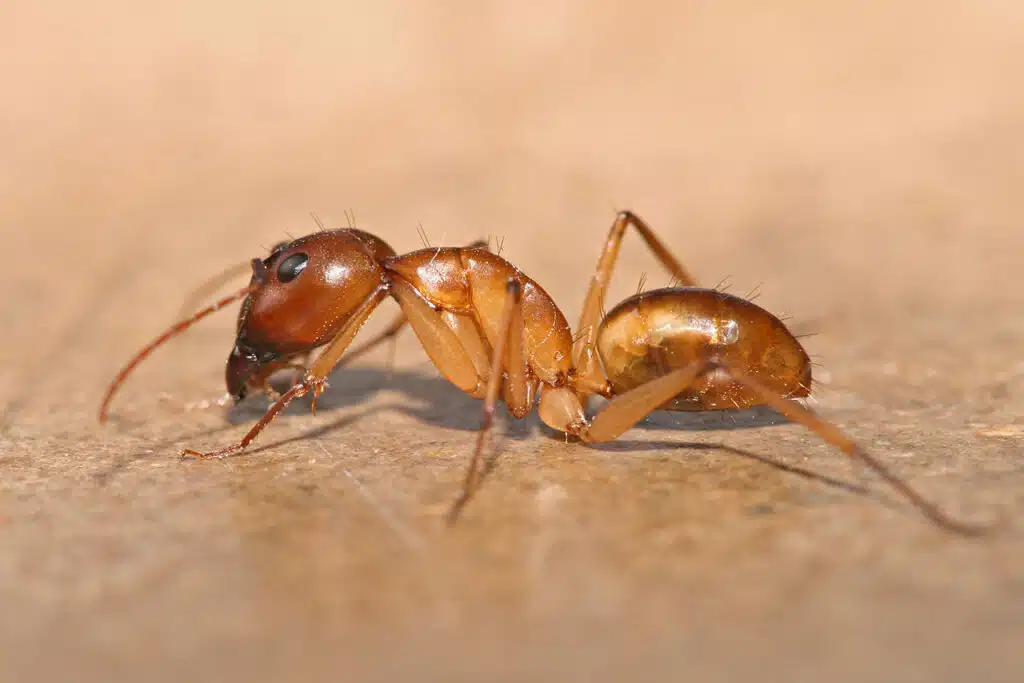
Most ants are considerably large than lice. Most species such as Carpenter ants measure at least 6mm but can grow to 10mm.
However, many small ants such as Fire ants only grow to 6mm. Many Fire ants are as small as lice, only measuring 2mm.
Fire ants also have a brown color which might make them appear similar to lice.
One of the biggest issues when it comes to confusing Fire ants with lice is their bite. Fire ants have painful bites which can lead to irritated skin.
This makes some people mistake ants for lice.
You can distinguish between these species by their habitat. Lice attach themselves to hair while ants live in colonies or nests without a human host.
2. Bed Bugs
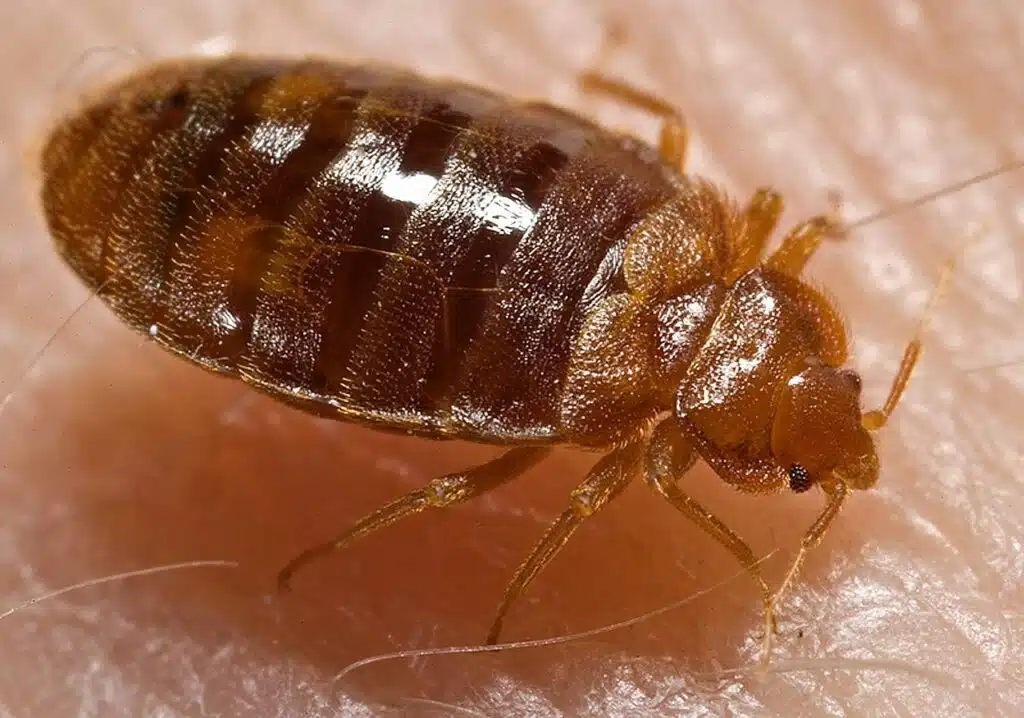
Bed bugs are some of the most troublesome pests as they feed on human blood. You can bring bed bugs to your home from hotels, gyms, and other places with a bed bug infestation.
Bed bugs feed on human blood but they don’t live on humans.
They are found on the mattress and under the mattress as they prefer to hide.
Most types of bed bugs are also known for having a similar size to lice. They grow to a size between 5 and 6mm which means bed bugs are only slightly larger than lice.
Bed bugs also have a brown color which may appear red after a blood meal.
Unlike head lice or pubic lice, bed bugs live close to humans but not on humans. They can be found on clothes but they can also be found on the bed where they come out at night for a blood meal.
3. Fleas
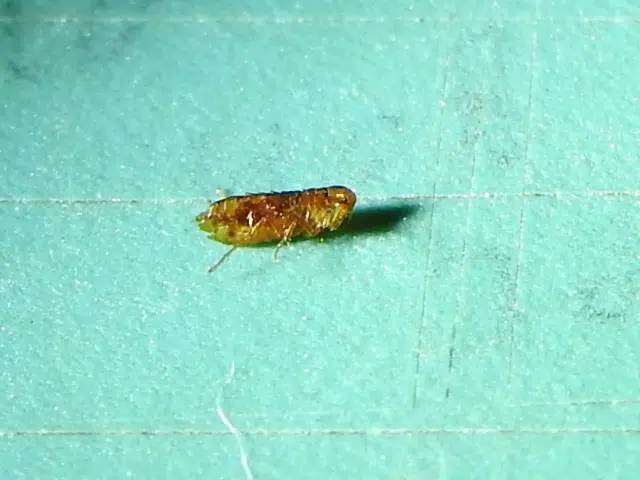
Fleas are some of the most common types of bugs confused with lice. Both fleas and lice feed on human blood and can infest homes to a large extent through rapid multiplication rates.
Fleas can quickly be distinguished from lice by their movements. Unlike lice, fleas can jump very long distances.
The jumping bug on the bed of a red-brown color is probably a flea and not lice.
Furthermore, you can distinguish fleas and lice by their host. Lice are very good at attaching themselves to human hair and feeding on human blood.
Fleas also live on dogs and they feed on their blood. If you see biting bugs on your dogs there are high chances of these being fleas rather than lice.
You can bring fleas to your home a lot easier as a result. Coming in contact with pets or animals that carry fleas is one of the proven methods of bringing them indoors.
4. Ticks
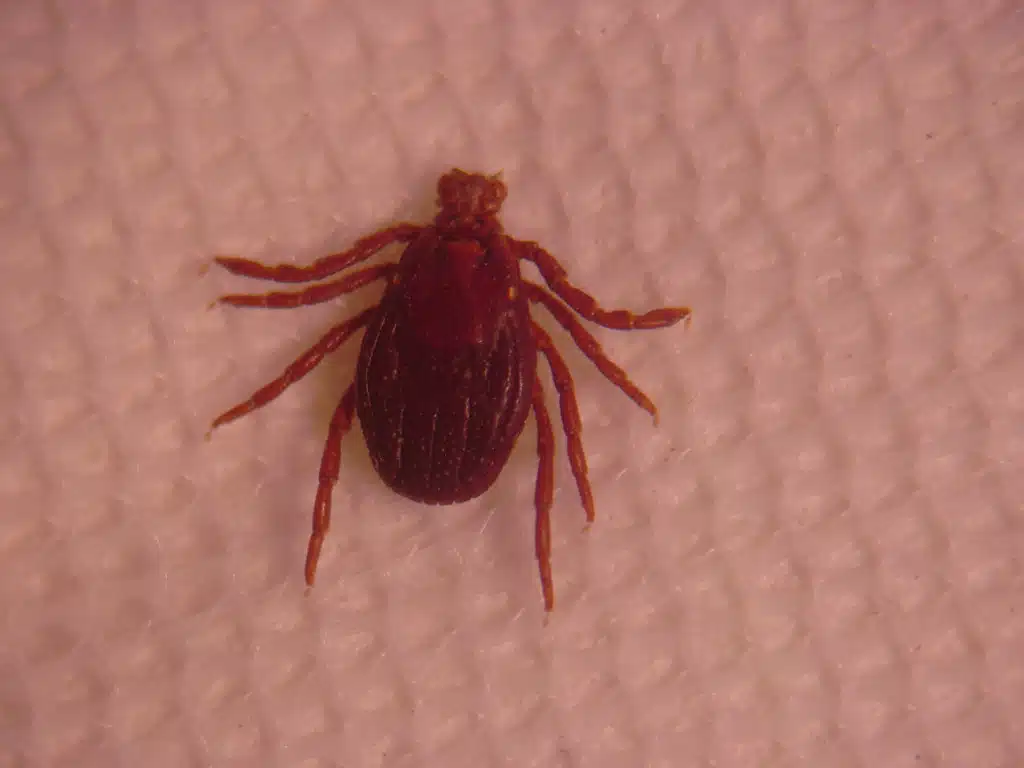
Ticks are another type of bug that can easily be picked up and carried into the house.
From here, many believe these apple seed-shaped bugs are lice.
Ticks feed on blood. They attach themselves to pets or humans and make it indoors as well. Unlike lice, ticks can attach themselves to any part of the body.
Large and small ticks attach themselves to the skin or the scalp as they prefer to be in areas that offer some type of protection.
As with lice, you need to remove ticks by hand. However, the sources of these bugs are different, which can help correctly identify each species.
Ticks are picked up from vegetation. Walking or hiking in the woodlands is one of the activities that can lead to picking up ticks.
Lice are more common around people without the capacity to take frequent showers or to adhere to minimum hygiene standards. They are often seen in homeless people.
5. Scabies
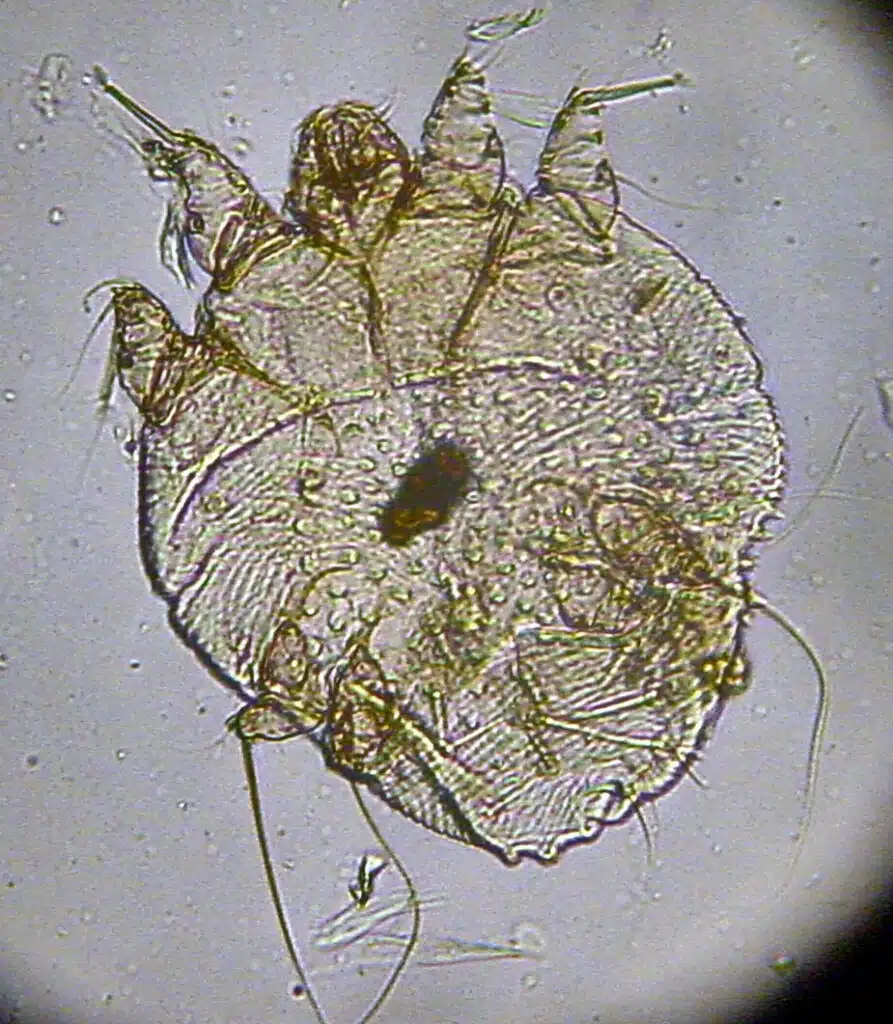
Scabies or Sarcoptes scabies mites are often confused with lice. Scabies burry into the skin where they lay eggs and not on the surface of the skin such as lice.
Scabies is very small and their microscopic nature makes them almost impossible to see with the naked eye.
Most people with scabies pick them up in public places. Locations such as playgrounds are common places where kids can pick up these mites.
They bury tunnels into the skin and lay eggs in these tunnels. The itchy results require medical attention.
Like lice, scabies can also be picked up by prolonged physical contact with a person that has scabies. This is why adults pick up scabies when they have multiple sex partners.
Like lice, scabies is also very contagious. Direct skin contact is what leads to the transmission of scabies to another person.
6. Dust Mites
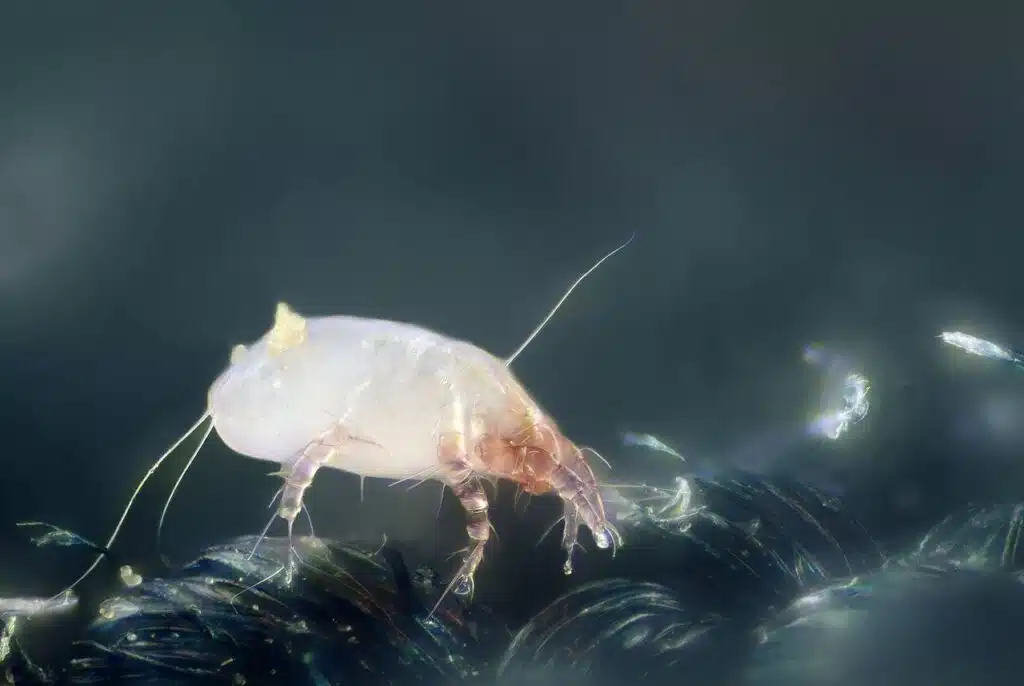
Dust mites are sometimes confused with lice due to the reactions they cause rather than their looks. Dust mites are invisible as they are microscopic bugs.
As their name implies, dust mites grow in all homes. The level of dust mites in homes varies considerably.
These small bugs need high levels of moisture. Dry indoor air kills dust mites. Reducing air humidity is a proven method of killing these small bugs.
Dust mites are some of the most problematic bugs as they aren’t visible but they cause reactions such as a runny nose or excessive sneezing.
People with severe sneezing reactions might confuse dust mites with lice reactions. Dust mites don’t bite and they don’t drink blood such as lice.
7. Gnats
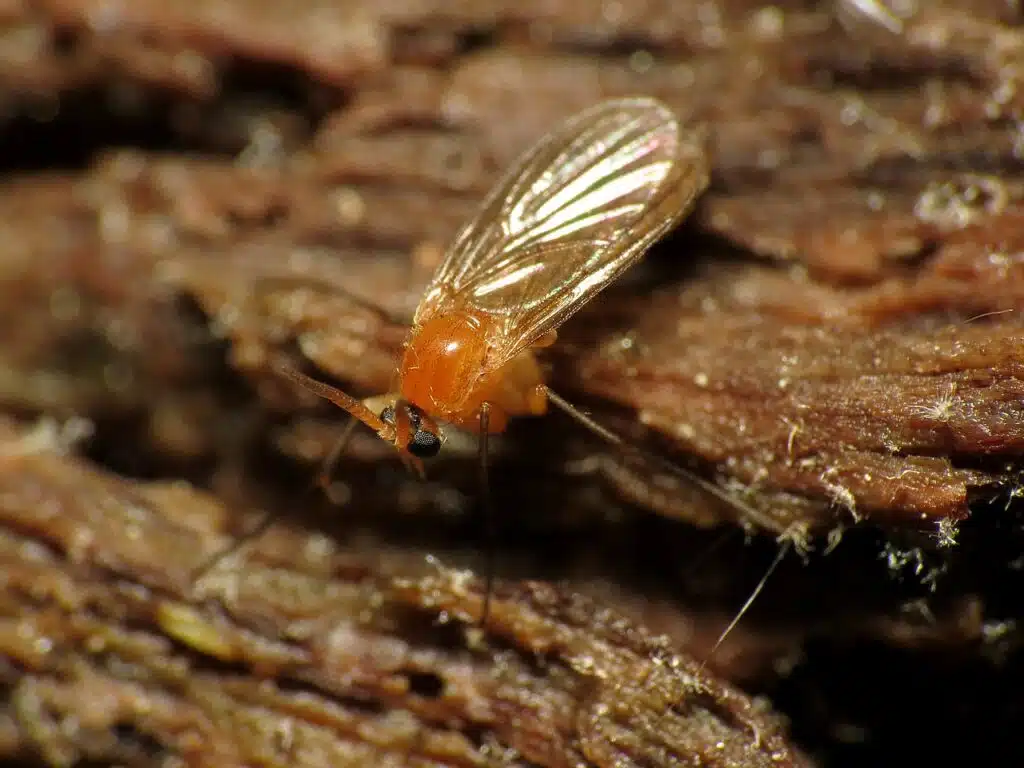
Gnats are small black flies that can bite any exposed area of the skin. While generally large than lice, gnats can also have a similar 1-3mm size when they first emerge.
Identified by their small black bodies, gnats differ from lice as they fly. They get inside their homes by flying through open windows.
Gnats also get into homes with unripe fruit where adults lay eggs in. These eggs hatch once the fruits begin to ripe.
Most gnats can also multiply once inside of the house, particularly when they have access to fruit. They start laying eggs in fruit again and multiply indoors as long as there’s sufficient food.
Some gnats are known to bite. The reactions are local with redness and pain in the area of the bite.
You can eliminate gnats indoors by discarding all open food and fruits these insects can lay eggs in.
8. Thrips
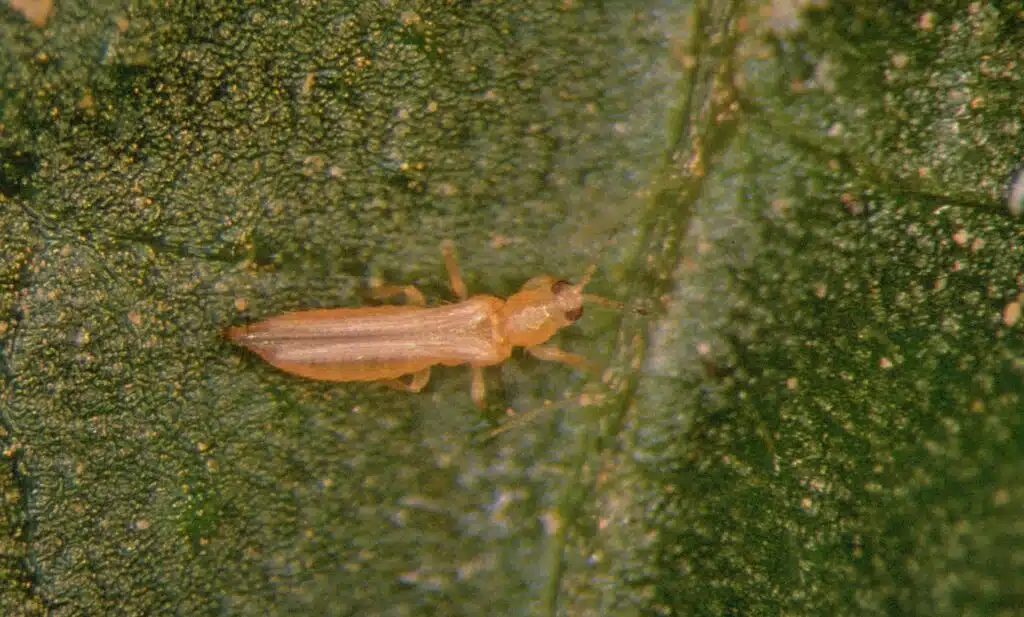
Thrips are biting bugs also picked up outdoors, similar to ticks. Thrips are seen biting a wide range of animals. They also bite people.
Similar to lice, thrips also come in many colors. Translucent green, yellow, and black, thrips come in many colors.
They can even fly.
Unlike lice which can survive indoors as long as they can feed on humans, thrips need to be outdoors for food.
They eat pollen and fungal spores. Since there’s not a lot of pollen from potted plants indoors, thrips often die within a few days when accidentally carried inside the house.
You can get rid of thrips on the spot using bug spray.
Opening all windows to allow these bugs to fly out is also one of the methods used to eliminate the bugs.
9. Aphids
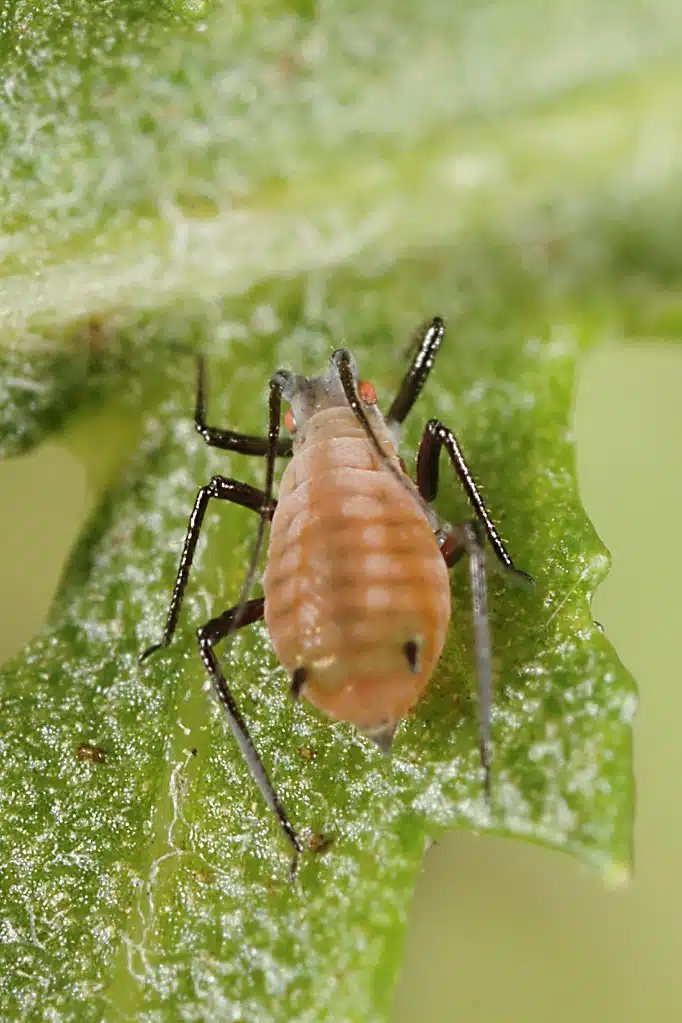
Aphids don’t bite people but they accidentally come indoors when they seek shelter. Lowering outdoor temperatures as well as rainy days can make aphids move indoors.
Like lice, aphids are also very small. They can be as small as ¼ inches. They are seen on indoor plants which they use for food.
Aphids feed on plant sap. They pierce plant leaves or stems. Aphids are known for coming in different colors.
They can be green, yellow, or brown. Often too small to spot with the naked eye, aphids don’t live on humans as lice.
They can be seen on houseplants or plants around the house. Almost all types of plants, flowers, and vegetables can be seen as food for aphids.
These bugs can be eliminated by discarding the infested plant.
10. Springtails
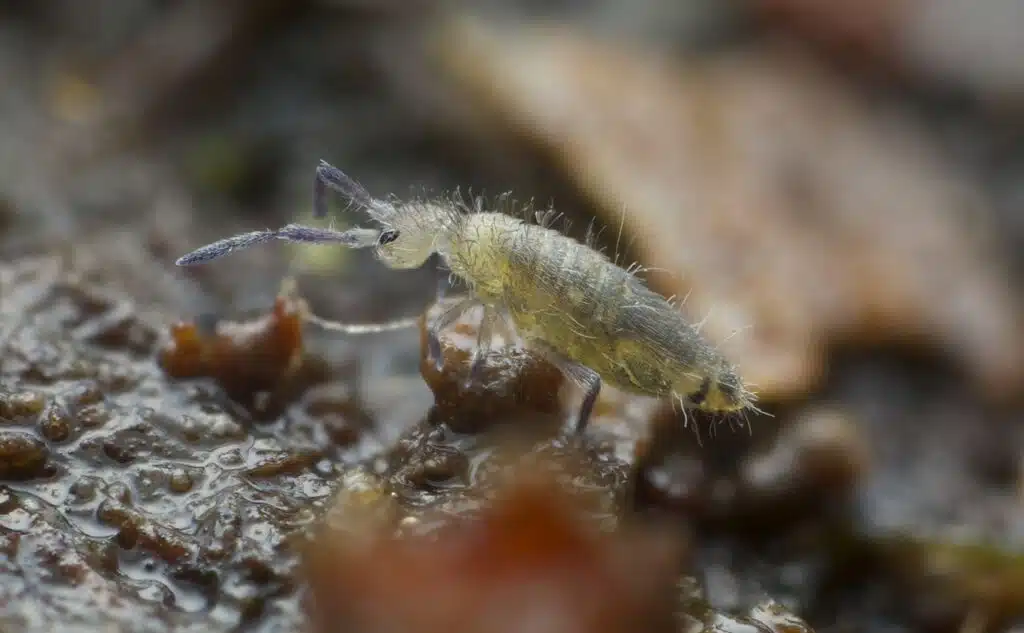
Springtails have similar sizing to lice. They are as small as 2mm and they might be difficult to spot at first. These small bugs get their name from their ability to jump.
Unlike lice, springtails can jump at least 1 inch in the air whenever they feel threatened. You can immediately distinguish between lice and springtails by this jumping ability.
Springtails are also among the species that feed on bacteria, lichens, or even decaying vegetation. They might have a small positive role in recycling organic matter.
Like other bugs, springtails need moisture to survive. They can enter homes for food or moisture.
Unlike lice, springtails don’t bite but they can be problematic once they establish themselves in an area of the house where they can multiply.
You can eliminate springtails by first eliminating the organic material they feed on. Lowering humidity levels and getting rid of algae or bacteria in the house are recommended steps to keep springtails out.
Pesticides are also used whenever you find springtails around the house as these chemicals kill them on the spot.
Some springtails might try to escape by running indoors at this stage. This is why many pest controller professionals recommend sealing all gaps around windows and doors first before applying pesticides against springtails.
11. Booklice
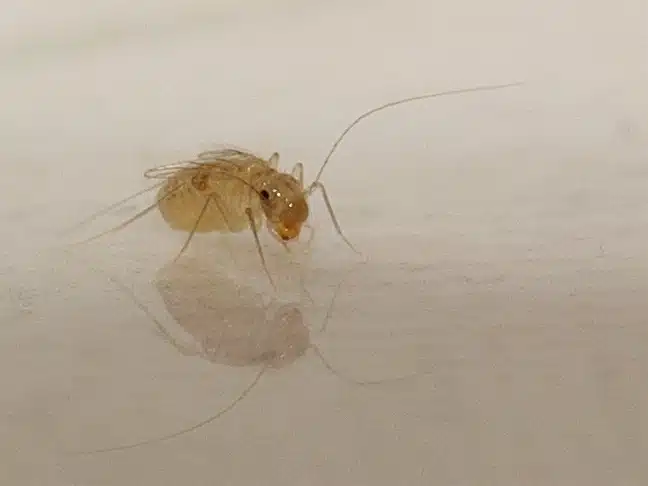
Booklice are very small bugs of a tan or brown color that also love humidity. These types of bugs are generally smaller than lice.
Booklice measure around 1mm and are almost always present in homes with high humidity levels. Bugs of this genus live on mold and they feed on the mold that’s even too small to be noticed at first.
Almost all homes with high humidity have booklice. It might grow on walls and it’s common in the kitchen or bathrooms where humidity is higher than in other rooms.
Controlling and eliminating booklice is subject to the same actions. You need to reduce humidity and improve ventilation inside of the house.
Opening windows and doors after taking a shower or cooking might be a good starting point. Adding other ventilation solutions around the house can also create air currents that eliminate mold and booklice.
Professionals can also use scanning tools that detect where mold formation is a risk even when it’s not visible to the naked eye.
Booklice don’t bite and they don’t spread diseases. They are still not welcomed in homes and their presence is a sign you need to control indoor humidity.
What Else It Could Be?
Not all itching and biting sensations come from lice and bugs of a similar size. Some of these sensations can be caused by irritants such as bad fabrics. Other larger insects might also be responsible for lice-like skin reactions,
Fabrics
Some types of synthetic fibers can cause itching. Clothes that have been washed with low-quality detergents can also cause certain skin conditions.
Some of the skin reactions caused by fabrics are common in the areas of exposed skin where they are in contact with the body.
Airborne chemicals
Chemicals in the air such as pesticides or other strong cleaning agents can cause itchy sensations in the hair, just like lice.
You can avoid reactions to these chemicals by properly ventilating the entire house and leaving windows open for fresh air to come in.
Mosquitoes
Mosquitoes may not lay eggs in hair (they lay eggs in water) but may cause itching just as lice. They normally bite areas of exposed skin although they can also bite the scalp, through the hair.
You can control mosquito bites by eliminating mosquitoes inside. Adding window mesh screens and sealing all cracks and openings they can use to get indoors is a good starting method to eliminate these biting insects.
Beetles
Considerably larger than lice, beetles may also be confused with lice by those unfamiliar with their species. A few common beetles include the Oriental beetle, the Pine Shoot beetle, and the Drugstore beetle.
All of these bugs can get indoors. Those with a predisposition for allergic reactions might be among the first to see red skin or itchy skin sensations.
You might also have a runny nose or watery eyes whenever there are beetles in your house or the bed if you’re prone to allergic bug reactions. Some people may confuse these reactions with the reactions to lice.
Spiders
Spiders come in all shapes and sizes. One of the common mistakes people make with spiders is to assume they always build spider webs and sit in dark corners.
There are thousands of spider species and many live on the bed as they can jump and move around quickly.
Spiders rarely lay eggs on humans as they prefer to lay egg sacs in secluded areas such as behind furniture. You may find out some small spiders can bite, which is why they might also be confused with lice.
Summary
Ants and bed bugs are some of the most common bugs that look like lice. They have the same size and the same color which makes many believe these bugs are lice.
Lice have a few different traits which make them different from many other bugs, even bugs that bite.
They live attached to human hair anywhere on the body. Lice also lay eggs in the hair. This means lice have different methods of feeding and mating than many other similarly–sized bugs.
You can distinguish lice and other bugs but where you find them indoors. While lice can be found on clothes or the bed, they prefer to remain attached to humans.
Other bugs such as bed bugs live on the bed. Dust mites and thrips are also known to make it indoors but they rarely attach themselves to humans.
Lice can get indoors from getting in contact with a person that has lice or by carrying items infested with lice. Other bugs that look similar to lice may get inside looking for food, warmth, or humidity. Eliminating food sources gets rid of all bugs. Lice are eliminated by discarding all infested items and even by taking lice-specific medication.